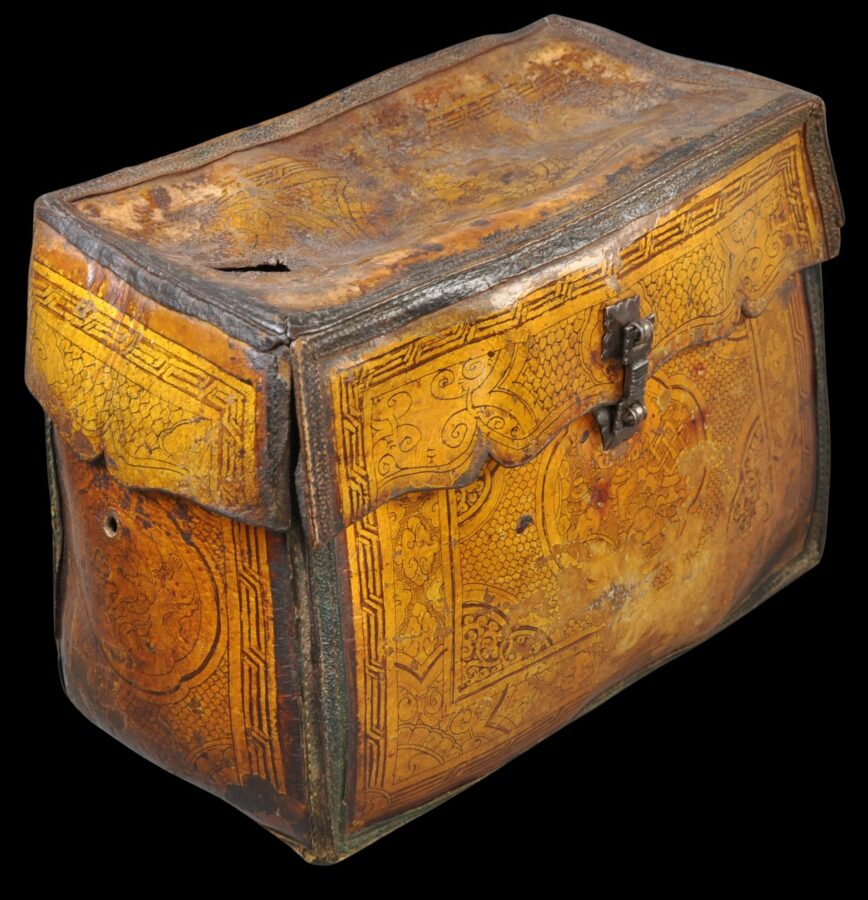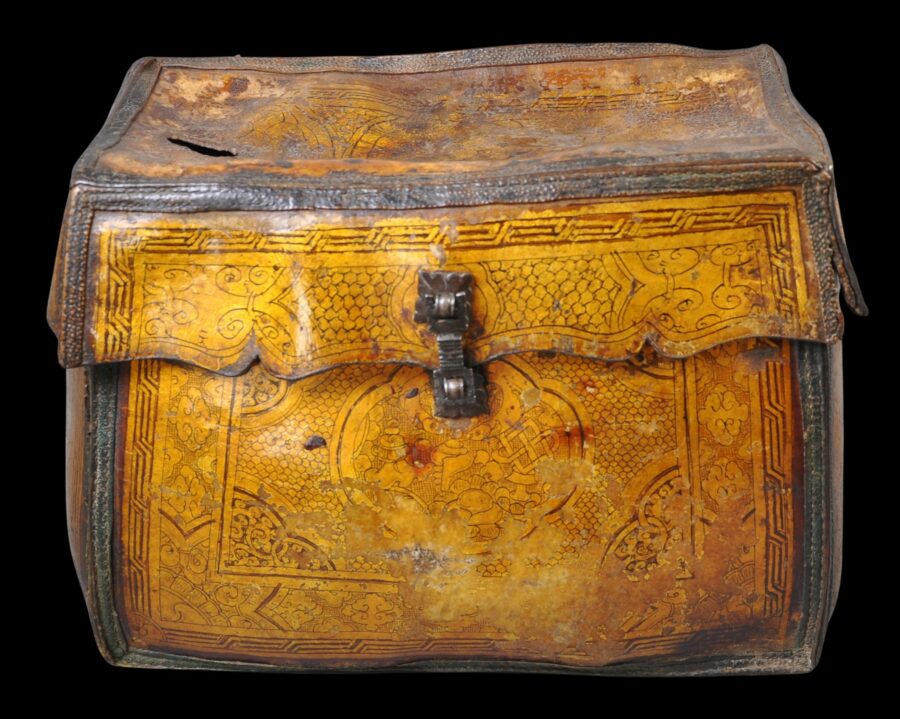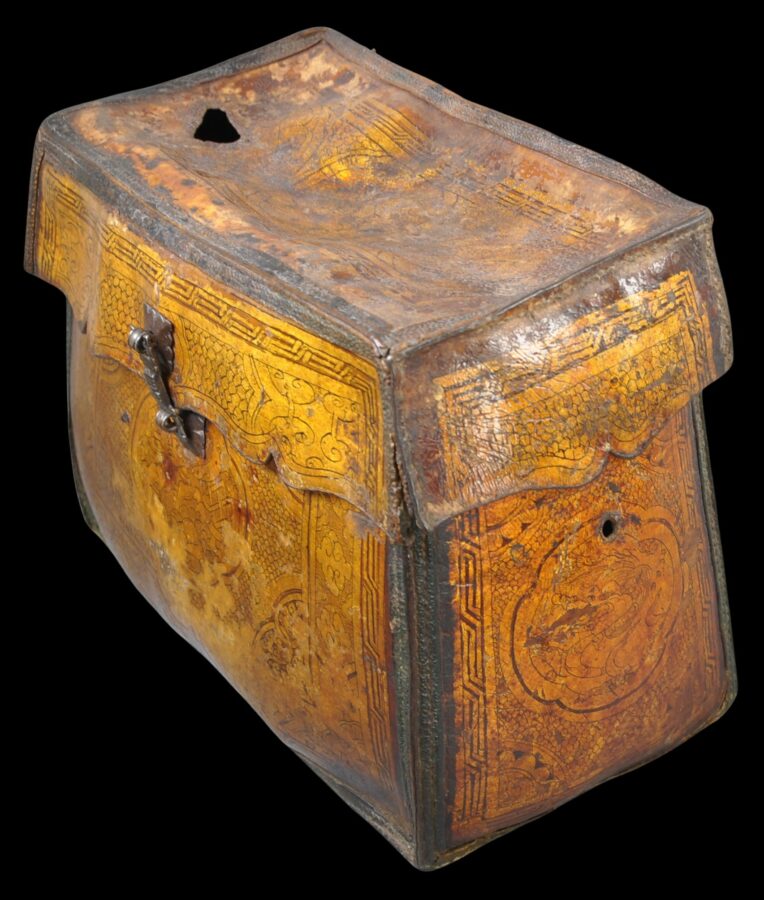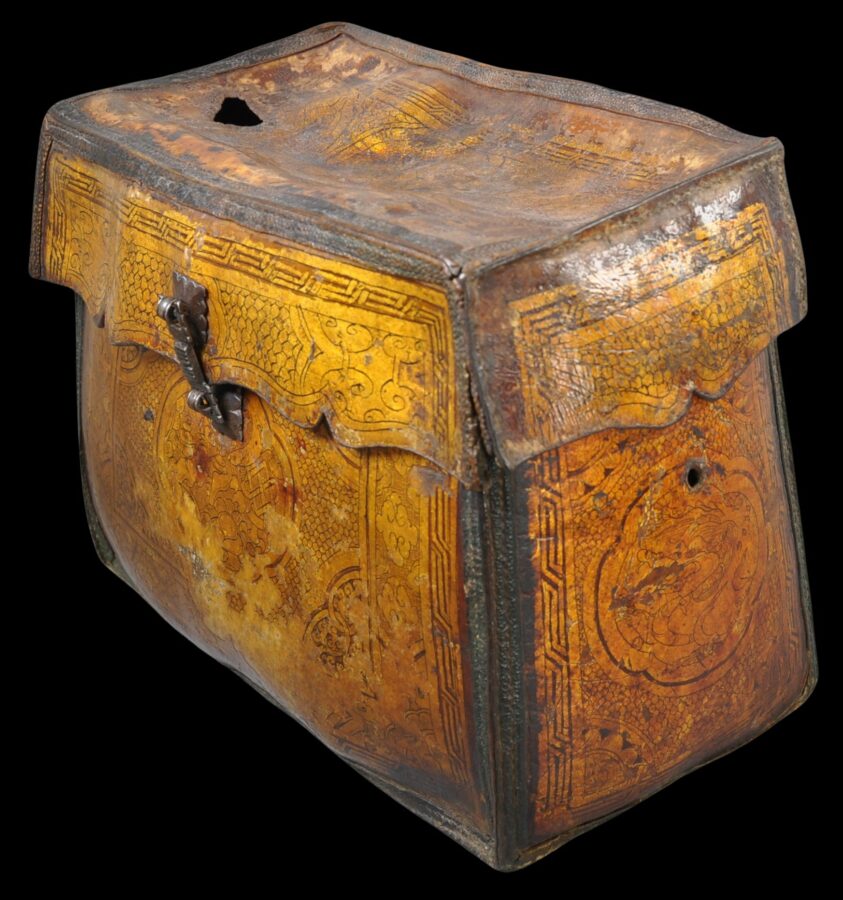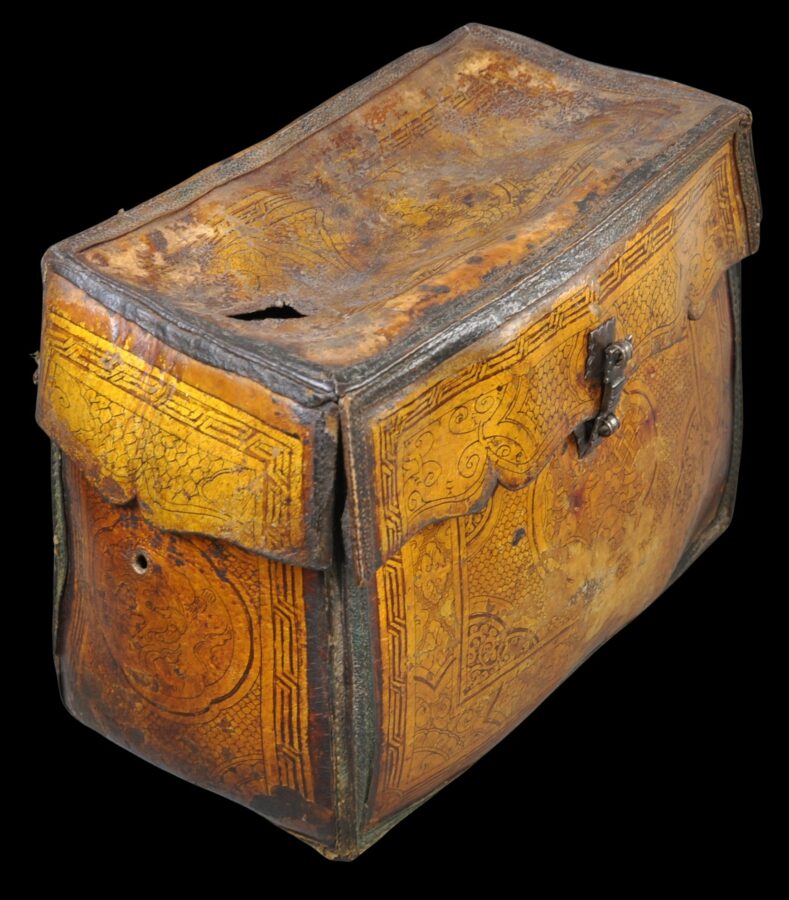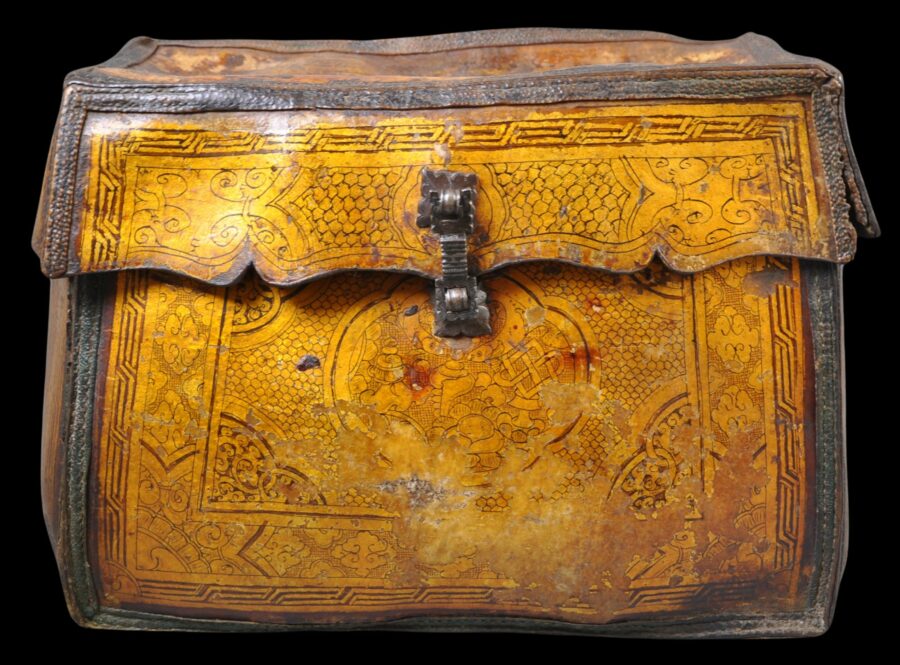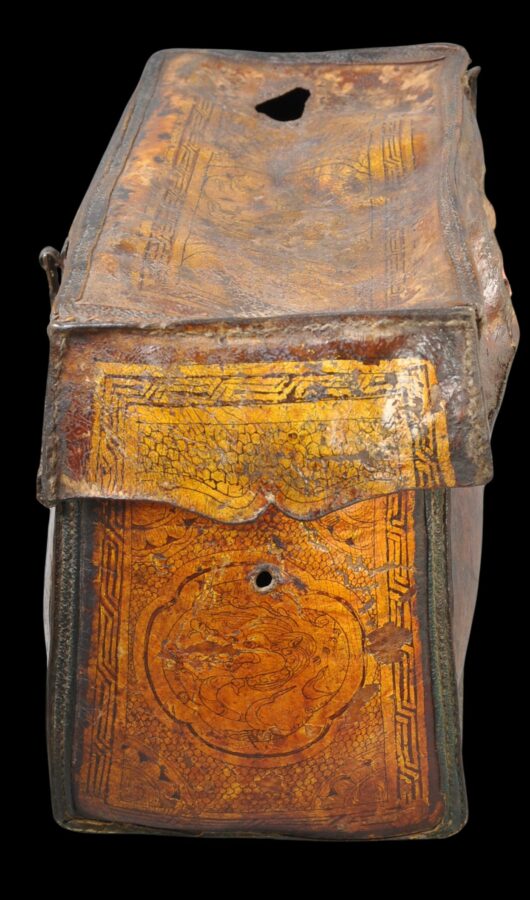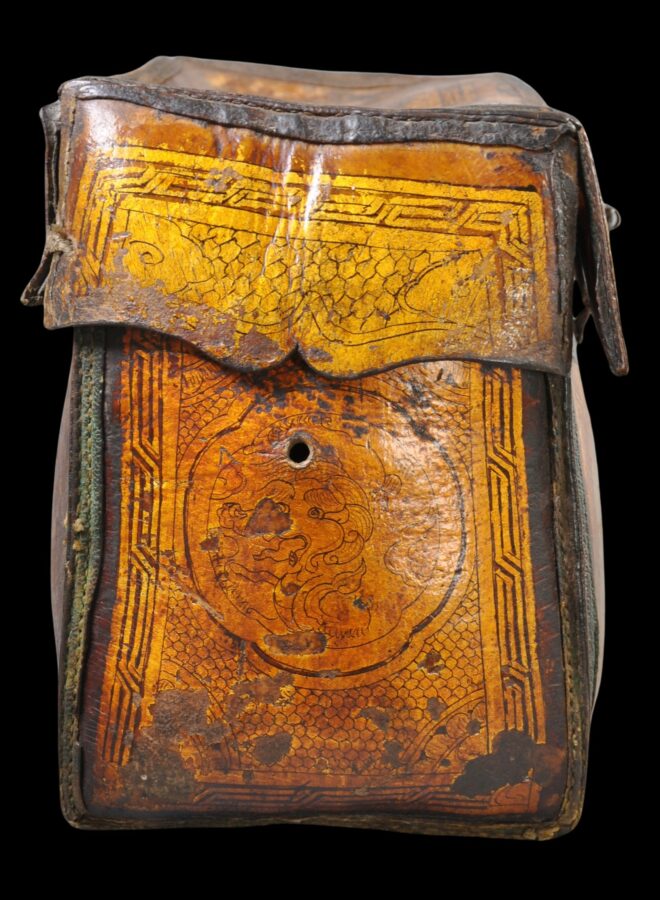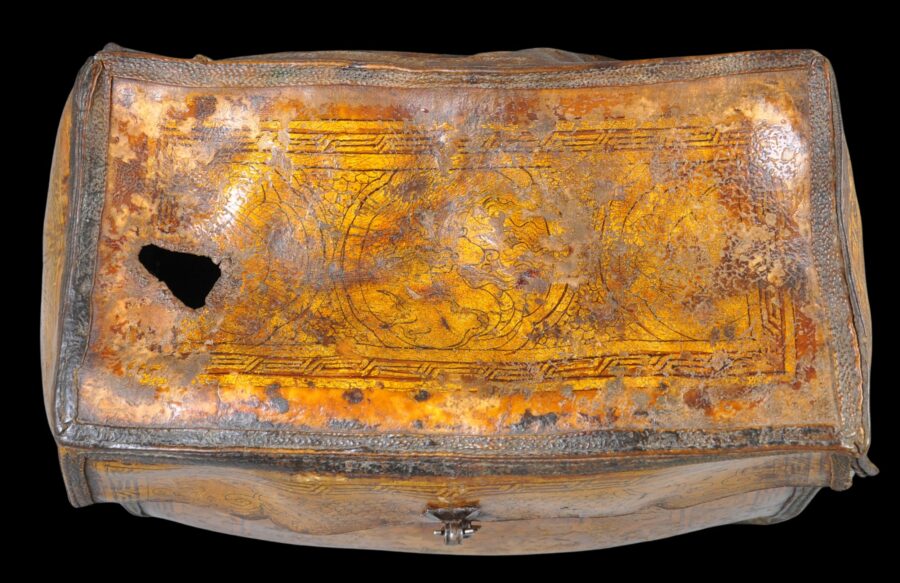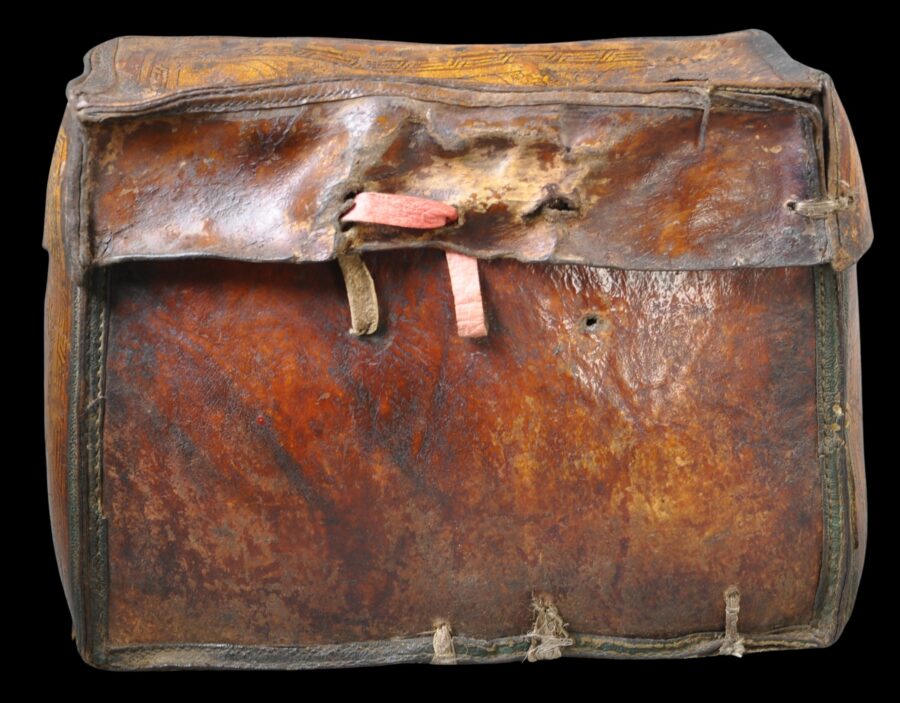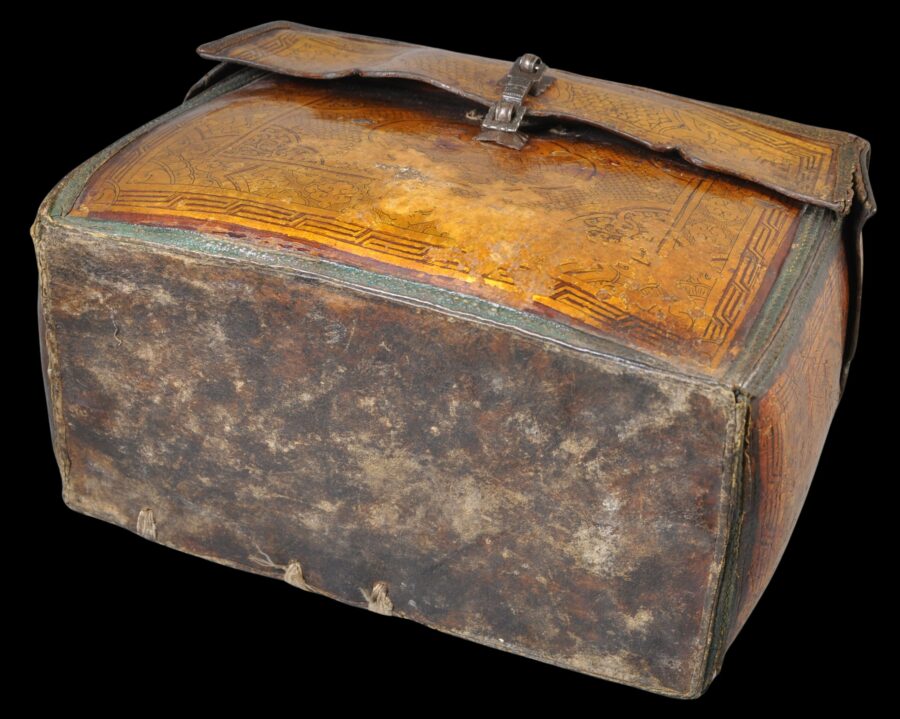This casket or box of trapezoid form is from Tibet and possibly Mongolia and dates to the 15th-16th centuries. It belongs to a group of rare armour-related items from Tibet and possibly Mongolia made from leather and decorated with gold and shellac.
The walls and base are made entirely of thick sheets of stiffened leather sewn together, and then decorated with gold leaf, black pigment and shellac. Motifs used to decorate the cover, the cover flaps, the front and the two sides include the Eight Auspicious Symbols, within key-fret borders and against scale-like background. The sides are decorated with dragons within roundels.
The use of gold and shellac over leather has given the casket warm, orange-reddish colours.
The cover no longer opens (the leather has become cardboard-like over time) but the front has a brass latch and loop plate.
The casket was in a private collection with a group of other related objects that are now in the Metropolitan Museum of Art and which were included in the Met’s ‘Warriors of the Himalayas’ exhibition and the exhibition catalogue by the same name. See LaRocca (2006, p. 119, p. 122). Or see them: here, here and here.
These other items comprise leather arm guards, a powder flask, and a quiver, all made from leather decorated with gold and shellac in the manner of the casket here. The military use for these other items suggests that the box here also had a military use. The Tibetan name for leather armour was bse khrab. According to LaRocca (2006, p. 116), ‘virtually no [Tibetan] leather armour for man was known to have survived until relatively recently, nearly all the extant examples having come to light in the past fifteen to twenty years.”
Himalayan items made from leather that has been decorated with pigments or gold and shellac are relatively scarce. See a platter we had in the past for an example.
The casket has excellent patina and obvious age. There is an old hole in the lid to one side; as mentioned, the cover no longer lifts off; a hole on each side of the box suggests other handles might once have been in place; and there is loss here and there to the gold leaf and pigment decoration. But overall, the casket is a very rare survivor and has great presence.
References
LaRocca, D.J., Warriors of the Himalayas: Rediscovering the Arms and Armor of Tibet, Metropolitan Museum of Art, 2006.
Thurman, R., & D. Weldon, Sacred Symbols: The Ritual Art of Tibet, Sotheby’s/Rossi & Rossi, 1999.


